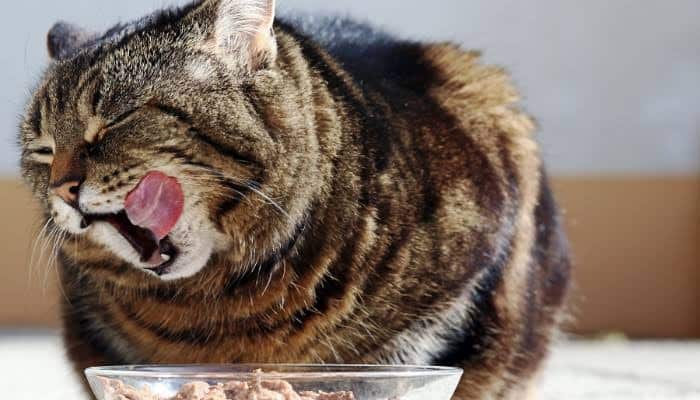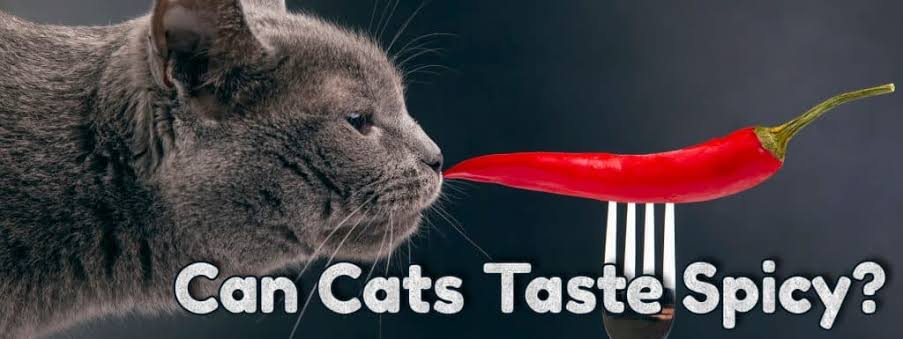Welcome, feline enthusiasts and curious minds alike, to a captivating exploration into the tantalizing world of cat taste buds. Today, we embark on a fascinating journey to uncover a question that has intrigued many: Can Cat Taste Spicy?. Settle in, let’s unravel the mysteries of Cat taste together.
Understanding Cat Taste Buds
Cats are fascinating creatures with unique taste sensations that shape their dietary preferences. Understanding these taste sensations is crucial for pet owners seeking to provide the best possible nutrition for their feline companions. Let’s delve into the five basic tastes and explore how cats perceive flavors:
Exploration Of The Five Basic Tastes
- Sweet: While humans have a strong affinity for sweetness, cats lack the taste receptors for detecting sweet flavors. This is due to evolutionary adaptations that prioritize protein-rich diets in the wild.
- Sour: Cats have limited sensitivity to sour tastes compared to humans. However, they may still exhibit preferences for slightly acidic foods, particularly when paired with other flavors.
- Salty: Cats possess taste receptors for salt, which is essential for maintaining electrolyte balance. However, their sensitivity to salt is lower than in humans, reflecting their natural carnivorous diet.
- Bitter: Cats are more sensitive to bitter tastes than humans, likely as a defense mechanism against ingesting potentially toxic substances found in the wild. Bitterness can deter cats from consuming certain foods or plants.
- Umami: Known as the savory taste, umami is appreciated by cats, especially in protein-rich foods. Their taste receptors for umami contribute to their enjoyment of meat-based diets.

Research On Cats’ Sensitivity To Various Tastes
Research has shown that cats exhibit varying degrees of sensitivity to different tastes, influenced by factors such as age, breed, and individual preferences. While some cats may have a strong aversion to bitter flavors, others may be more tolerant. Similarly, preferences for umami-rich foods can vary among individuals, reflecting their unique taste sensitivities.
Factors Influencing Cats’ Taste Preferences
Several factors influence cats’ taste preferences, including genetics, early life experiences, and environmental factors. Kittens may develop preferences for certain flavors based on the foods they are exposed to during early development. Additionally, cats’ taste preferences can be influenced by health conditions such as dental issues or gastrointestinal sensitivities.
Recommended: Can Cats Eat Cherries?
Debunking Myths: Can Cats Taste Spicy?
The question of whether cats can taste spicy flavors is a common one among pet owners and enthusiasts. While some may believe that cats can enjoy a bit of heat in their meals, the reality is quite different. Let’s delve into the science behind cats’ taste perception and debunk some common myths surrounding their ability to taste spicy foods.
Myth 1: Cats Can Taste Spicy Like Humans
Contrary to popular belief, cats lack the specific taste receptors necessary to detect capsaicin, the compound responsible for the spicy sensation in foods like chili peppers. Capsaicin activates receptors in humans known as TRPV1 receptors, which trigger the perception of heat and pain. However, cats do not possess these receptors in their taste buds, making them unable to taste spicy flavors in the same way humans do.
Myth 2: Cats Enjoy Spicy Foods
While some pet owners may observe their cats showing interest in spicy foods or exhibiting behaviors that suggest enjoyment, it’s important to understand the underlying reasons. Cats are known for their curiosity and may investigate or even taste-test spicy foods out of curiosity. However, this behavior does not necessarily indicate that they enjoy the spicy flavor. In fact, consuming spicy foods can be unpleasant or even harmful to cats, leading to gastrointestinal upset or discomfort.
Myth 3: Spicy Foods Are Safe for Cats in Small Amounts
Some may believe that offering cats small amounts of spicy foods as an occasional treat is harmless. However, even a small amount of spicy seasoning or sauce can cause digestive issues or irritation in cats. Spicy foods can irritate the delicate lining of the gastrointestinal tract, leading to vomiting, diarrhea, or other gastrointestinal problems. Additionally, spicy foods may also pose a choking hazard if ingested by cats.
Recommended: Can Cats Eat Coconut?
Role Of Scent In Cat Food Preferences
Have you ever noticed your cat sniffing around their food before taking a bite? Cats rely heavily on their sense of smell to evaluate and select foods, making the role of scent in their food preferences crucial. Let’s explore how scent influences cats’ food choices and why it’s essential for pet owners to consider when selecting their feline companions’ meals.
The Importance Of Scent In Cat Food Preferences
Cats have an incredibly keen sense of smell, with olfactory receptors that are far more sensitive than those of humans. This heightened sense of smell allows cats to detect a wide range of odors, including those emitted by different types of food. When presented with a meal, cats will often use their sense of smell to assess its palatability and determine whether it meets their dietary preferences.
How Cats Use Scent To Evaluate Food
Before diving into their food, cats will typically sniff it thoroughly to gather information about its scent. The aroma of a meal can provide valuable clues to cats about its freshness, quality, and nutritional content. Cats may also use scent to distinguish between familiar and unfamiliar foods, as well as to detect any potential contaminants or spoilage.
Influence of Scent On Food Palatability
The scent of food plays a significant role in its palatability for cats. Aromatic compounds released during cooking or food processing can enhance the appeal of a meal to cats, making it more enticing and appetizing. Conversely, unpleasant or off-putting odors may discourage cats from consuming certain foods, even if they are nutritionally balanced.
Choosing The Right Food Based On Scent
When selecting food for their cats, pet owners should consider the importance of scent in their feline companions’ food preferences. Opting for high-quality cat foods made with fresh, wholesome ingredients can help ensure that meals are not only nutritious but also appealing to cats’ sensitive noses. Additionally, offering a variety of flavors and textures can keep mealtime exciting for cats and encourage healthy eating habits.
Recommended: Can Cats Eat Mushrooms?

Tips On Enhancing Cats’ Mealtime Experiences
Mealtime is not just about filling your cat’s bowl with food—it’s an opportunity to enrich their sensory experiences and strengthen the bond between pet and owner. Here are some tips to enhance your cat’s mealtime experiences and make each feeding session a delightful occasion for both you and your feline friend.
1. Provide Interactive Feeding Solutions
Consider incorporating interactive feeding solutions, such as puzzle feeders or food-dispensing toys, into your cat’s mealtime routine. These engaging devices stimulate your cat’s natural hunting instincts and encourage physical activity while they work to extract their food from the toy. Interactive feeding can help prevent boredom, reduce stress, and promote mental stimulation in cats.
2. Offer Variety In Flavors And Textures
Keep mealtime exciting for your cat by offering a variety of flavors and textures in their diet. Rotate between different protein sources, such as chicken, fish, and beef, to provide a well-rounded nutritional profile and prevent taste fatigue. Additionally, consider mixing wet and dry food or incorporating freeze-dried treats to add variety and appeal to your cat’s meals.
3. Create A Relaxing Mealtime Environment
Set the stage for a relaxing and enjoyable mealtime by creating a peaceful environment free from distractions. Choose a quiet area of your home away from noisy appliances or high-traffic areas where your cat can eat undisturbed. Dimming the lights and playing soft music or nature sounds can further enhance the ambiance and help your cat feel calm and comfortable during mealtime.
4. Use Food Puzzles Or Slow Feeders
If your cat tends to eat too quickly or struggles with portion control, consider using food puzzles or slow feeders to encourage slower, more mindful eating. These devices require cats to work for their food, slowing down their eating pace and preventing overeating. Slow feeding can also help reduce the risk of digestive issues such as vomiting or regurgitation.
5. Incorporate Positive Reinforcement
Reward your cat’s good behavior during mealtime with positive reinforcement, such as verbal praise, gentle petting, or small treats. This positive association can help reinforce desirable mealtime behaviors and strengthen the bond between you and your cat. Avoid using punishment or negative reinforcement, as this can create stress and anxiety around mealtime.
Recommended: Is Bamboo Toxic to Cats?

Frequently Asked Questions
Can Cats Taste Spicy Food Like Humans Do?
No, cats cannot taste spicy flavors in the same way humans can. They lack the specific taste receptors necessary to detect capsaicin, the compound responsible for the spicy sensation in foods like chili peppers.
Do Cats Enjoy Eating Spicy Foods?
Generally, cats do not enjoy eating spicy foods. While some cats may show curiosity towards spicy foods and may even taste-test them out of curiosity, consuming spicy foods can be unpleasant or even harmful to cats, leading to digestive issues or discomfort.
Is It Safe To Feed Spicy Foods To Cats In Small Amounts?
It is not safe to feed spicy foods to cats, even in small amounts. Spicy foods can irritate the delicate lining of the gastrointestinal tract in cats, leading to vomiting, diarrhea, or other gastrointestinal problems. Additionally, spicy foods may pose a choking hazard if ingested by cats.
Why Do Some Cats Show Interest In Spicy Foods?
Cats are naturally curious animals and may investigate or even taste-test spicy foods out of curiosity. However, this behavior does not necessarily indicate that they enjoy the spicy flavor. Cats may also be attracted to the aroma or texture of spicy foods, but it’s essential for pet owners to prioritize their cats’ health and well-being by avoiding spicy foods altogether.
Can Spicy Foods Cause Health Problems In Cats?
Yes, spicy foods can cause health problems in cats, including digestive issues, gastrointestinal upset, and discomfort. Cats may experience vomiting, diarrhea, abdominal pain, or other symptoms after consuming spicy foods. It’s crucial for pet owners to be mindful of the ingredients in their cats’ diets and avoid feeding them spicy foods to prevent potential health problems.
Recommended: Can Cats Eat Raspberries?
Conclusion
while cats may exhibit curiosity towards spicy foods, they cannot taste them in the same way humans do. Cats lack the specific taste receptors necessary to detect capsaicin, the compound responsible for the spicy sensation in foods like chili peppers. Feeding cats spicy foods can be harmful and may lead to digestive issues or discomfort.
Understanding cats’ taste perception and preferences is essential for pet owners to provide a balanced and nutritious diet tailored to their feline companions’ needs. By debunking common myths and misconceptions surrounding cats’ ability to taste spicy foods, pet owners can make informed decisions about their cats’ diets and prioritize their health and well-being.
Instead of offering spicy foods, pet owners can focus on providing high-quality cat foods made with fresh, wholesome ingredients that appeal to cats’ natural instincts and taste preferences.

